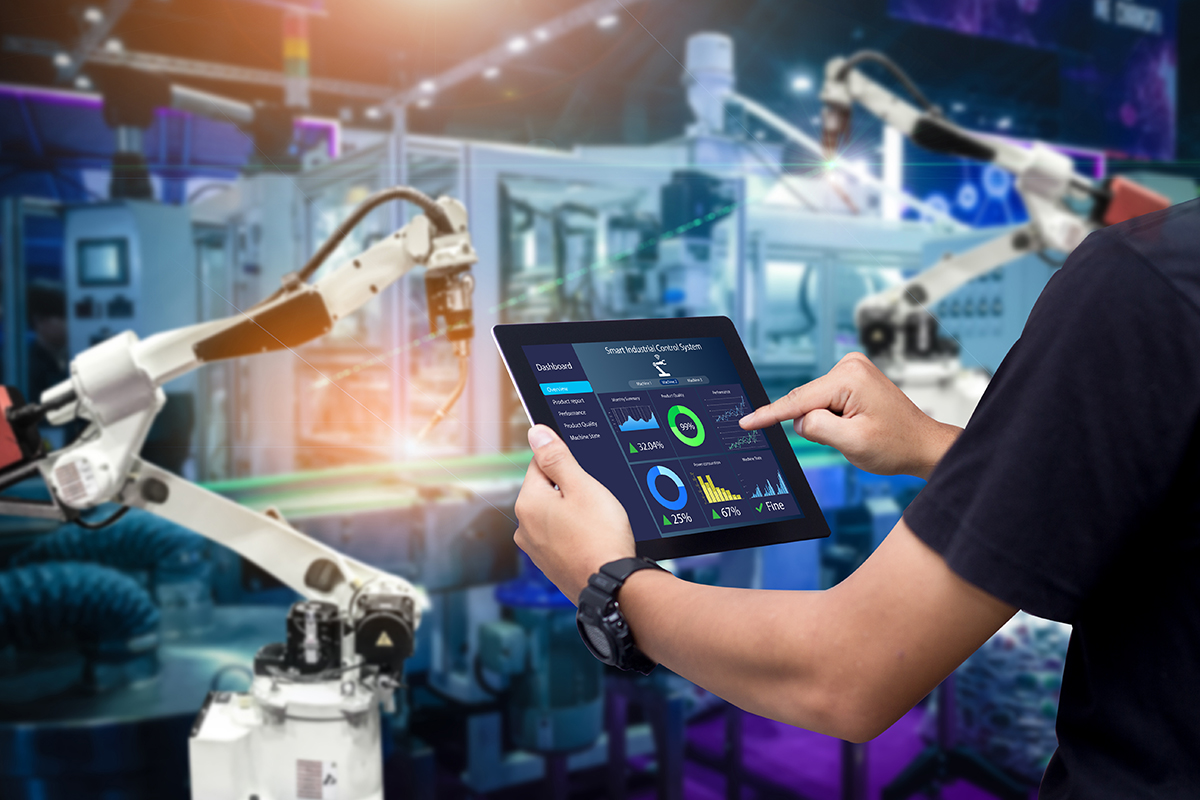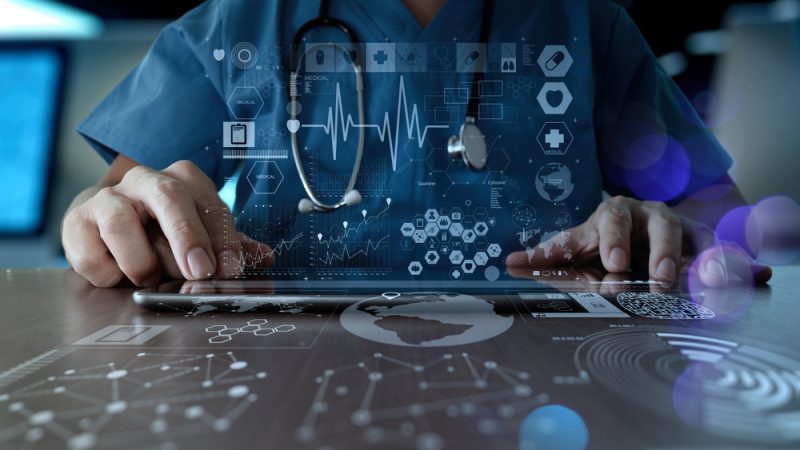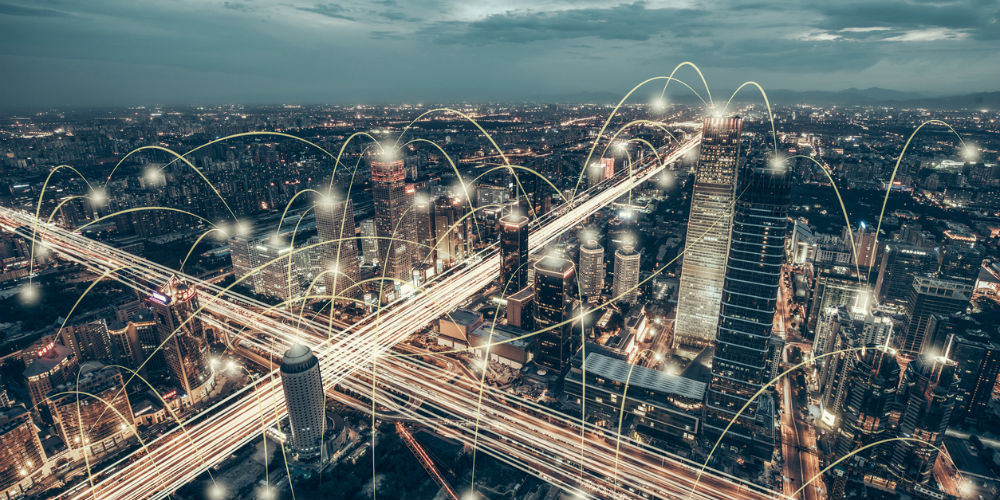
How AI Changes the World and Affects Our Future
Today we worry that cybercriminals can steal our personal data and encrypt all the files on our PCs. In the coming decades, new, more serious risks may be added to these.
The digitalization of industry, automobiles, medicine, and other industries you go to and face daily will make our lives more convenient, comfortable, and dangerous. As AI advances, we’ll get indistinguishable identity spoofing using biometric falsification and other hallmarks of the cyber apocalypse. Let’s find out what cyberthreats are associated with the smart environment and whether they can be avoided.
Smart Industry

Progress doesn’t stand still and a significant part of the global industry can already be safely classified as Industry 4.0. It involves connecting equipment to the Internet, using intelligent control systems, and connecting the physical and virtual worlds. There are already fully automated enterprises in which people perform a minimum of functions, taking on the job only when a breakdown occurs. They have even coined the name Lights Out Factories for such enterprises, i.e., “enterprises with no lights on,” because robots don’t need them.
It isn’t a mistake to say that over the next ten years not only will the number of automated factories increase, but rather the approach to the work of such enterprises will change qualitatively. Connecting the virtual world with the material world gives birth to new digital ecosystems that include smart factories with full automation of the production cycle. New products are designed in digital design bureaus, and when the model is ready, the factory’s equipment adjusts to the production of the created product. All components are ordered automatically, and logistics and implementation are managed by artificial intelligence.
Each customer order in such a plant triggers an automatic inventory check, replenishing components if necessary, and sending instructions to a semi-autonomous vehicle. The result is increased efficiency and speed, reduced downtime, and lower resource costs. The warehouse complexes of Internet giant Amazon, where AI-controlled robotic carts have replaced over 20,000 employees, are already operating in a similar way.
The negative consequence of full automation of the production cycle can be not only leaks of intellectual property, but also the release of potentially problematic products, accidents in production and other difficulties. And because not only industrial equipment will be connected to the network but also countless sensors and sensors to monitor the operation of systems, hackers will get a huge surface area for attacks. After all, just one vulnerable sensor can infiltrate a company’s network and then, for example, encrypt data and extort ransom.
Another problem for such enterprises could be “poisoning” machine learning algorithms with the wrong data. This can lead to unpredictable results, such as defects and safety problems in finished products.
Digital Healthcare

In the next ten years, medicine in developed countries will become even more digital. Using information from wearable sensors, which will become fitness bracelets and smart watches, an AI-powered personal medical assistant will order from supermarkets a selection of foods that provide a balanced diet and sufficient vitamins. It’s possible that people who have health problems will even have only foods approved by a doctor available on supermarket shelves.
Premium services will link nutritional data to health information, gym membership, sleep patterns, and even intestinal health through an Internet-connected smart toilet that can take tests itself. Contact lenses will regularly check tear fluid for a number of common acute and chronic diseases, including cancer, stroke risk, and diabetes. If abnormalities are found, the person will be scheduled for further tests, counseling and treatment. Skin patches will be created for those who do not wear contact lenses. They will be used to monitor sweat composition and prescribed medications may be administered. DNA profiling will be actively used in prescribing treatment.
Urban Infrastructure

One of the noticeable changes in the urban environment in 10 years will be autonomous transport. AI is already learning how to control cabs and trains, and in the near future we should expect a complete transition to autonomous passenger transportation. Of course, autonomous passenger transport will require the development of smart urban infrastructure also controlled by artificial intelligence.
A single control center will collect data on traffic jams, accidents, events and other events in order to effectively relieve traffic arteries and regulate flows using traffic lights. And if there is a congestion of passengers, the AI will detect it with cameras and be able to direct additional buses and shuttles to it.
Unmanned cabs are still far from perfect and, just like regular vehicles, at times get into accidents, some of them even fatal. In the future, the quality of autonomous vehicles will improve, but that will only make this part of the urban infrastructure more attractive to cybercriminals.
Not only transport, but also utilities, residential, and office buildings will be integrated into a single system of smart city infrastructure. This will require equipping buildings with sensors and control systems. Even now no one is surprised by electricity meters that automatically transmit information about electricity consumption. In the future the degree of integration will be even higher. This will make it possible, for example, to exclude situations where, on warm autumn days, the heating is turned on because the heating season has started according to the schedule. Such changes will require a profound modernization of the entire utility sector.
Smart city utilities will continue to be an attractive target for cybercriminals. Cases of attacks on it are already observed – for example, in 2024, a hacker broke into the computer controlling the water treatment plant of Oldsmart, Florida, and almost poisoned all the residents, increasing by 100 times the concentration of one of the substances. To avoid similar incidents in the future, it’s necessary that those responsible for the implementation of smart city infrastructure components pay sufficient attention to cybersecurity.
